Lessons from Climate Week: 3 Things Needed to Accelerate Change
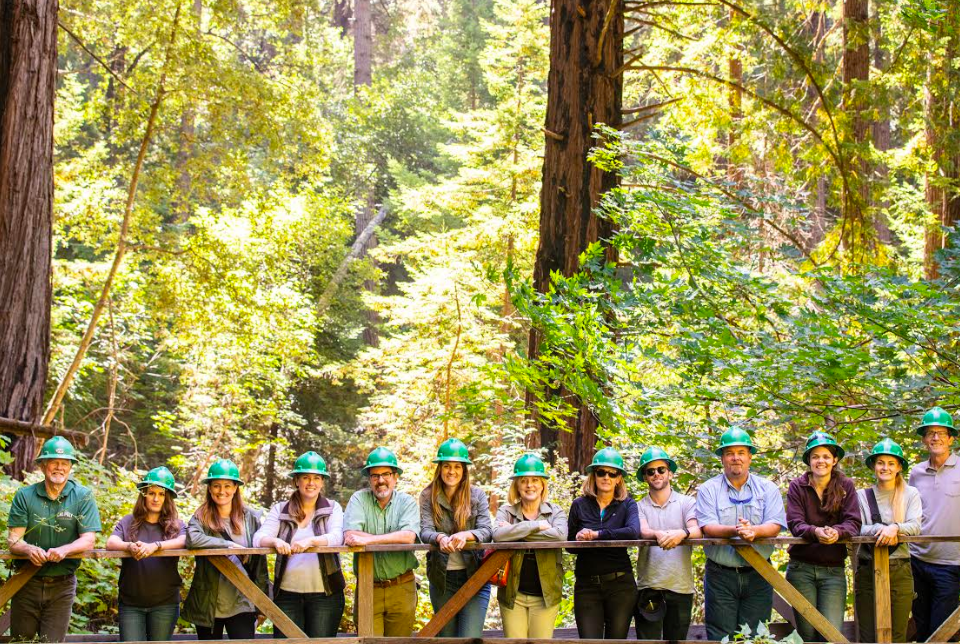
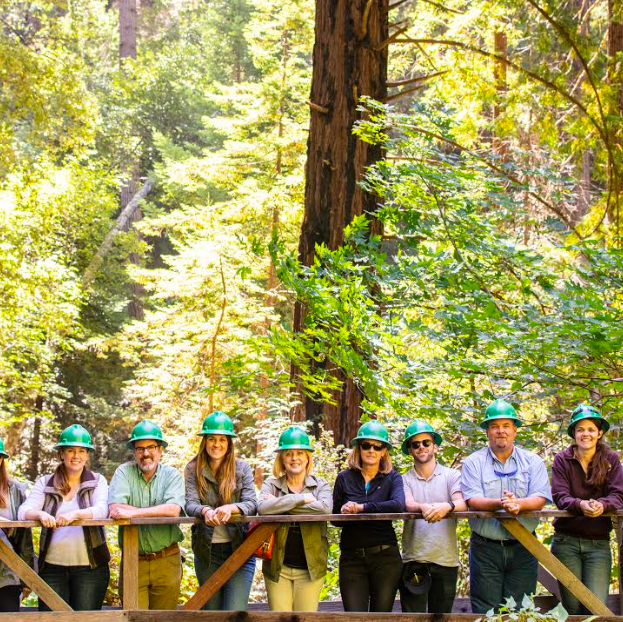
TriplePundit is covering the U.N. General Assembly and Climate Week NYC through the weekend. You can follow our coverage here.
Climate Week NYC officially kicked off Monday, but arguably last Friday‘s Global Climate Strike set the stage for this week’s agenda. Like so many, I have been inspired by this youth-led movement and its uncompromising calls for action. And so, as I go into the week, I am keeping in mind three key ingredients needed to create sustainable impact – a bold action plan, strong partnerships and an enthusiasm for change.
Bold action is needed long after Climate Week
In 2015, the UN Sustainable Development Goals announced a bold vision meant to focus and align the global community around an agenda for sustainable development by the year 2030. However, two reports released in July of this year showed that despite progress in a number of areas, progress has been slow or even reversed on some goals.
Acknowledging the urgency to act, in March, the UN General Assembly declared 2021-2030 the decade of ecosystem restoration. This global vision and call to action aims to massively scale up the restoration of degraded and destroyed ecosystems to fight the climate crisis and enhance food security, water supply and biodiversity. This is a rallying cry for business, government and civil society to accelerate and focus our efforts where they can have the greatest impact.
I am inspired by the leadership being demonstrated by business in the lead up to climate week – taking their own bold actions to drastically reduce their carbon impacts. Amazon committed to carbon neutrality by 2040 as part of the new Climate Pledge, through a combination of decarbonization strategies and offsetting. Google announced a $2 billion investment in new renewable energy infrastructure across the US, South America and Europe – the largest investment in the company’s history.
This week, HP is taking the next steps in its own bold action plan to create a forest positive future for printing. Together with longstanding partner and conservation leader World Wildlife Fund (WWF), HP is committing $11M to the restoration, protection and conservation of 200,000 acres of forest – an area equal to the size of New York City – in the first project within HP’s Sustainable Forests Cooperative. As part of this initiative, HP will also support WWF’s efforts in developing science-based targets for forests, estimating the carbon, water and biodiversity benefits of conservation efforts. For a legacy printing company, this constitutes a really big vision. But, with resource-rich forests being destroyed at the pace of 27 soccer fields per minute, HP believes the time for better business models, swift action and greater collaboration is now.
Transformative partnerships
Which brings me to the second key ingredient – partnerships. If you want to go far, go together – and we have very far to go, and urgently need to get there faster. Any successful sustainable development agenda requires partnerships between governments, the private sector and civil society to truly move the needle.
The oceans are one of our greatest shared resources – when managed well, they create jobs, provide food, support abundant biodiversity, and help to regulate our global climate. However, our oceans face significant threats that are reducing their ability to provide crucial ecosystem services. The solutions to restoring ocean health will need to be as diverse as the causes, and will require deep and authentic collaboration. I am looking forward to the launch of some audacious and impactful partnerships for action over the next week.
In May of this year, the inaugural Ocean Plastics Leadership Summit convened leading organizations in the plastics supply chain in one of the five oceanic gyres. This event put unlikely partners side by side to debate, discuss and hash out differences with the goal of inspiring partnerships, joint ventures and R&D initiatives to support new and scalable solutions to the ocean plastic pollution problem.
HP’s own partners have been critical in the company’s work to develop a fully functioning ocean-plastics supply chain in Haiti. And last week, HP proudly unveiled the world’s first notebook computer with ocean-bound plastic. We could not have done this without the close collaboration of our supply chain partners and the First Mile Coalition. The learnings from this project open new opportunities for new innovations and capabilities to collaborate and scale our ocean-bound plastics supply chain. And by joining the NextWave Coalition, we are able to share our learnings with other manufacturers in our industry and across sectors as we aim to create a truly global and circular plastics supply chain.
The best partnerships challenge us, contribute innovative ideas, push us to sometimes uncomfortable places, and demand authentic action.
Change is hard
Which brings me to my last critical ingredient—discomfort. Change is happening all around us, and it is up to us to harness this energy to positively transform how we think, behave and act. Change is hard, it is sometimes messy, and it can certainly be uncomfortable. But, it is in discomfort that we grow, we learn, and we get better.
So during this week, as you are running around New York City, make sure you are having the uncomfortable, challenging conversations. Share your vision, and be ready to back it up with action. And work hard to build partnerships that turn vision into action. Because the stakes are too high to move backwards, and change is coming, whether we like it or not. It is our responsibility and opportunity to shape it and create a measurably better future for the planet, its people and our communities.
Image credit: HP
Harnessing Satellite Technology Could Boost Climate Action
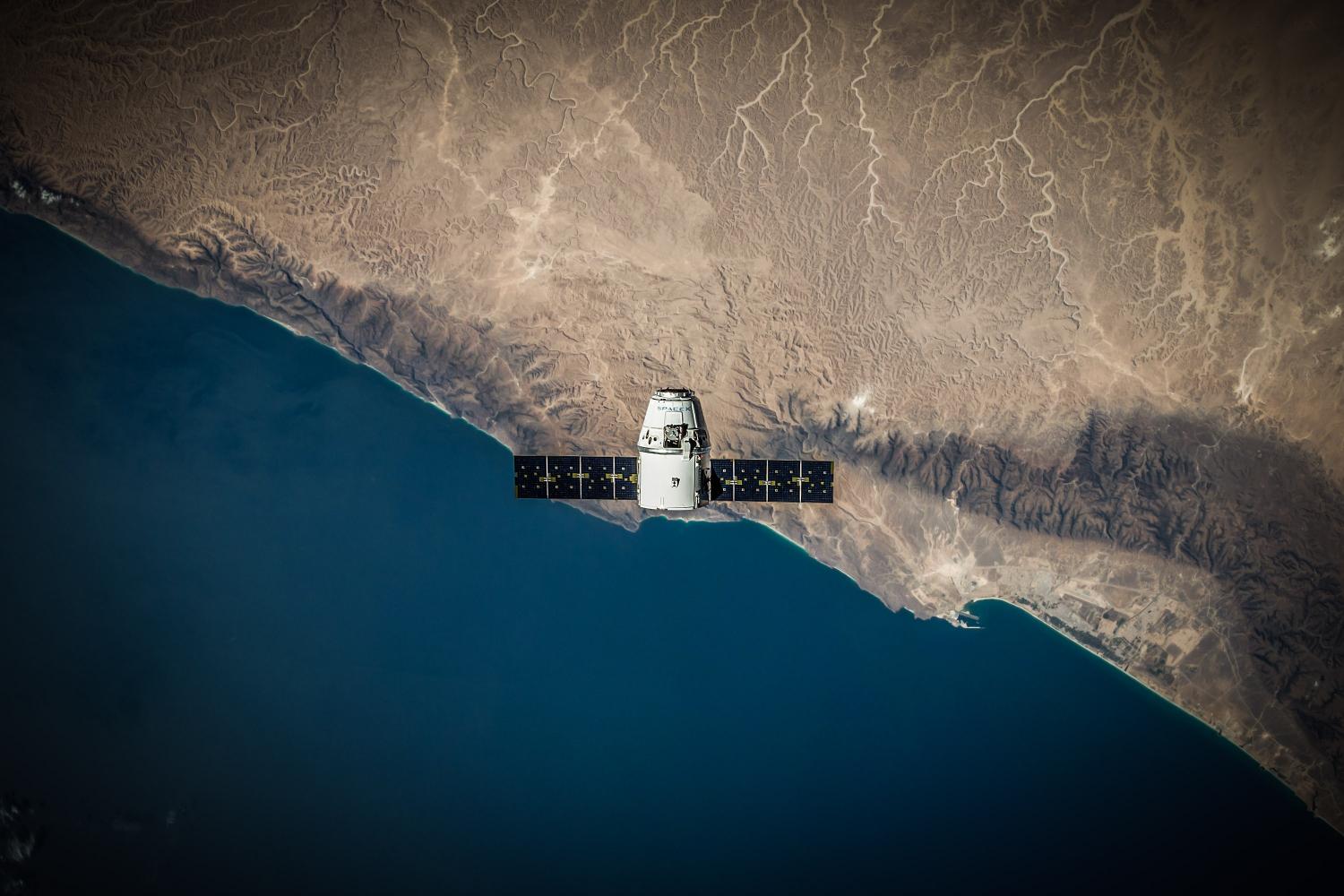
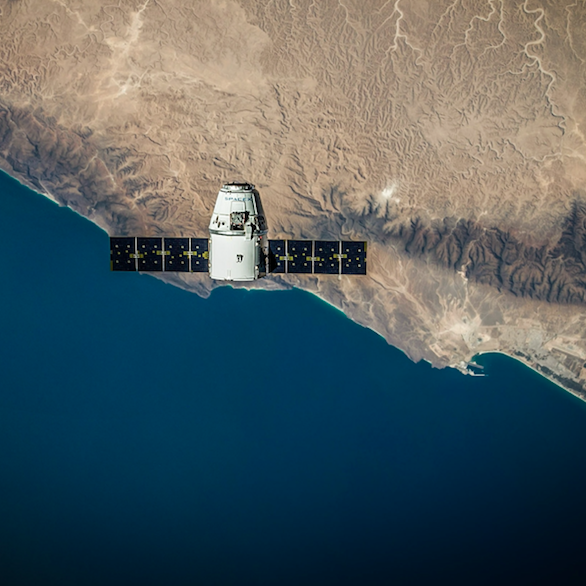
TriplePundit is covering the U.N. General Assembly and Climate Week NYC through the weekend. You can follow our coverage here.
As climate scientists continue to warn of dire outcomes during this week’s UN Climate Action Summit if global greenhouse gas (GHG) emissions are not rapidly slashed, a new initiative using satellite data may be part of the solution.
The Satellites for Climate Action initiative, announced at yesterday’s Bloomberg Global Business Forum in New York, will use satellite data to monitor greenhouse gas emissions and map and quantify problem areas that were previously unknown or inaccurately measured. The hope is that the initiative will allow governments and organizations to enact more targeted and effective climate mitigation strategies and turn satellite data into actionable information to accelerate climate protection.
The initiative was announced by Michael Bloomberg, the UN Secretary-General’s Special Envoy for Climate Action and founder of Bloomberg Philanthropies, California Governor Gavin Newsom, and San Francisco-based earth-imaging company Planet. Bloomberg will support the project with an undisclosed level of funding.
Planet operates the largest constellation of Earth-observing satellites in orbit, acquiring near-daily imagery covering Earth’s entire landmass. Satellites for Climate Action will use this technology to help fill climate data gaps in ongoing environmental research and climate monitoring by analyzing coal-fired plant operations globally and measuring essential climate variables. This will help governments and organizations, which are often stymied from taking stronger climate action due to lack of data.
In addition to monitoring coal-fired plant operations, Satellites for Climate Action will explore a new generation of satellite technologies with enhanced capabilities to detect greenhouse gases such as methane and CO2. It also is expected to develop new geospatial analytics that can directly enable conservation efforts for forests, coral reefs and other natural resources.
“Data is one of the most powerful tools we have in the fight against climate change,” said Bloomberg in yesterday’s announcement. “The better we can measure factors like greenhouse gas emissions and deforestation, the faster and more effectively we can address them, and the easier it is for the public to hold leaders accountable. This partnership will empower governments and businesses to take action.”
Governor Newsom said yesterday that the state would work with partners to use the satellite data to ensure that expected emissions reductions are happening, enforce existing regulations, and identify cheaper and faster ways to achieve further reductions.
Under the state’s greenhouse gas reduction program, California is striving to achieve carbon neutrality by 2045. Last month, Governor Newsom announced that GHG emissions in the state continued to fall ahead of schedule as the state’s economy grew ahead of the national average. The data from the California Air Resources Board’s latest state inventory of climate-changing emissions also showed that for the first time since California started to track GHG emissions, the state power grid used more energy from zero-GHG sources like solar and wind power than from electrical generation powered by fossil fuels.
“This technology [Satellites for Climate Action] gives us an important set of new tools to detect, monitor and cut greenhouse gas emissions,” said CARB’s chair Mary Nichols. “This initiative is exactly the type of collaboration we need to tackle climate change.”
Image credit: SpaceX/Unsplash
Beyond Climate Week: Why Environmental Literacy Matters to Your Company
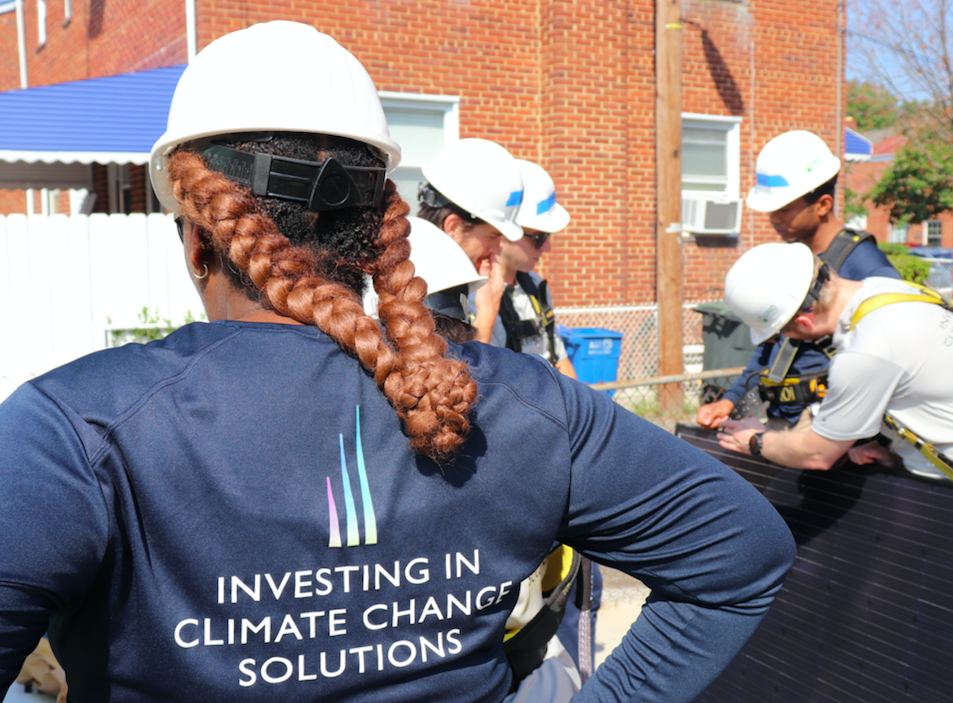
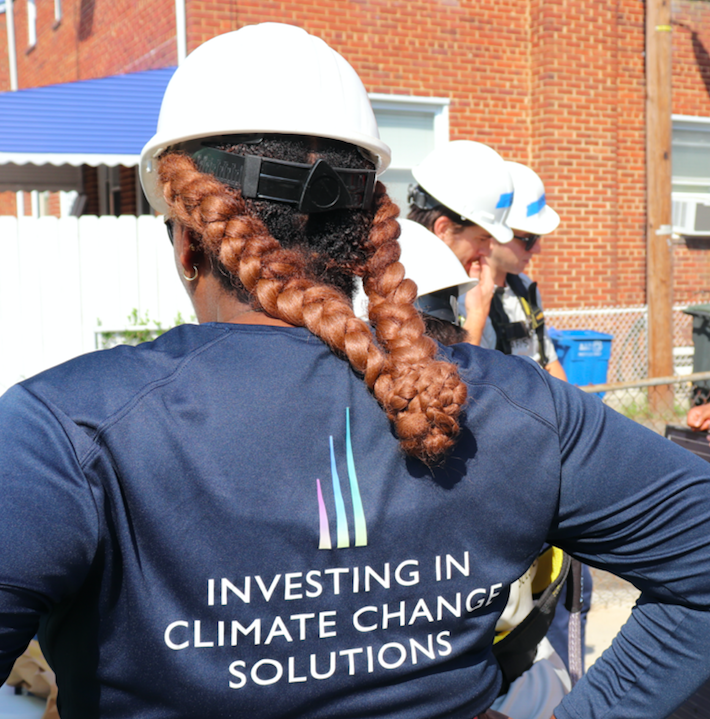
With Climate Week in full swing, companies are stepping over themselves to prove they have the climate action chops needed to help the world avoid catastrophe. But while many corporations mostly talk about goals and aspirations, a company based in Annapolis, Maryland stands tall with its actions and performance. And a key reason why Hannon Armstrong has emerged as a climate action leader in the U.S. business community is because of its laser focus what it describes as “environmental literacy.”
Hannon Armstrong is the first U.S.-based public company with a business model centered around investing in projects that either reduce carbon emissions or bolster resilience to climate change. The company has grown largely by offering capital to companies in the renewables, energy efficiency and sustainable infrastructure industries.
An environmentally and economically strong business model
An investment firm that makes money from such projects as energy storage or solar thermal power generation may sound far-fetched, but this is business as usual for Hannon Armstrong. Investors have certainly been buying into the company’s mission since it went public earlier this decade – and according to the company, about one-quarter of its stock is owned by investors focused on sustainability. If you bought stock during the company’s IPO in April 2013, that investment would be worth 250 percent more today. The company’s market cap currently hovers around $2 billion.
According to the company’s CEO, Jeff Eckel, its success lies in the fact that it has not diverted from its core strategy – and relies on everyone in the company to believe in the fight to take on climate change. “We will earn better risk adjusted returns by investing on the right side of the climate change line,” he said during a recent interview with TriplePundit. “It’s simple in concept, but very tricky in practice. But that bottom line is that we’ve simplified our mission, which is to use finance so that companies can accelerate the adoption of clean energy technologies and other sustainable solutions.”
One factor that ensures strong cross functionality across Hannon Armstrong is that management and employees regularly develop “Key Strategic Initiatives” or “KSIs.” At the beginning of each year, the company’s leadership team identifies three to five large cross-cutting initiatives that could help the company grow its business. Teams are then put together to work on each project, with regular updates to management. “These KSIs are not easy, so you find that they really drive creative solutions and collaboration. It’s an invigorating experience because you find yourself working closely with people that you wouldn’t normally partner with in your day-to-day role,” said Hannon Armstrong spokesperson Gil Jenkins.
Why environmental literacy matters
But in listening to Eckel, it is clear that Hannon Armstrong would not be succeeding in its wider mission – which of course, includes, keeping shareholders happy – if it were not for the employees’ “environmental literacy” that he insists is crucial to keep the company thriving.
Being aware of the various challenges and issues arising from climate change is partly what it takes to ensure someone is a fit at Hannon Armstrong. But remember, this is an investment firm and numbers matter. Sure, Eckel and the employees of Hannon Armstrong feel their work is important to save the world, but in the end, the company’s executives and employees are all running a business: There’s no point investing in projects that don’t make any financial sense.

Jeff Eckel, CEO of Hannon Armstrong
To that end, Hannon Armstrong employees must be able to evaluate a project and calculate all those pesky statistics associated with that potential investment, including, of course, carbon emissions. Projects not only need to have a viable rate of return, but at a minimum, they also have to be carbon neutral. “It definitely takes some sophistication to do all these calculations with rigor and accuracy, but it’s important,” Eckel explained. “A project has to pass our carbon count investment screen where we look at the carbon emissions avoided per $1,000 dollars invested. If an infrastructure project pencils out as just being carbon neutral, then that project must also have another measurable environmental benefit, such a reducing water consumption.”
Employees never stop learning
To be clear – environmental literacy at Hannon Armstrong is not just about numbers crunching allowing employees to hold their own with the types that work for those famous acronyms IPCC, CDP or CARB. The company regularly brings employees together so that everyone is updated on the business and political landscape, both of which can have an impact, at any time, on the broader clean technology sector across the U.S.
“Every quarter, we get the entire company together, and we go through relevant global and U.S. climate data,” said Eckel. “We discuss where the hotspots are, and what’s going on with the politics of climate in the U.S. Then, we talk what we’re hearing from our shareholders, updating on which shareholders really care about ESG, and which don’t. That’s mixed in with practical discussions on how the company is doing and where we are looking to invest."
These climate science, policy and innovation updates are not a top-down discussion – at one time, Eckel usually conducted them, but this culture of environmental literacy at Hannon Armstrong means everyone is well-versed in this space. “I delegate parts of this meeting to a different member of the staff each quarter; now, I don’t have to do it anymore!” Eckel said. “And there’s a definite benefit because people get to stand up in front of the company to present their research and analysis – which naturally drives more buy-in across the organization.”
Hence there’s a dynamic at Hannon Armstrong that is impressive considering it invests in what is still a nascent, 21st-century sector – but the company has been moving ahead by instilling this culture of environmental literacy largely by using proven, 20th-century tactics.
From book clubs to installing solar panels
For example, employees are encouraged to participate in the company’s book club. “There’s a monthly book reviewed by someone on staff and discussed by our book club, and the topics could be on either side of the climate change line,” Eckel said. “I made the first books we chose this year very chart-heavy, though, so employees couldn’t listen to them in the car.”
Speakers are also invited to share their insights with Hannon Armstrong employees on a regular basis. Guests have included NGOs such as The Nature Conservancy and organic crop consultants willing to share their views on agriculture. Eckel has made it clear to employees and guests that all points of view are welcome, including those who voice climate skepticism or express the positive aspects of fossil fuels.
Learning also continues outside the office through local volunteer projects. The company’s community engagement efforts include installing solar panels on low-income homes (as in a home in Southeast Washington, D.C., shown above); working with the Smithsonian Environmental Research Center's efforts to understand how climate change impacts wetlands; and underwriting programming for a year-long series of climate lectures in the Annapolis area.
One result of this ongoing emphasis on environmental literacy is that there is now a library at Hannon Armstrong’s Annapolis headquarters, one that Eckel described as having the “greatest hits of the past 40 years.” Providing resources, such as this book collection, is important to the company, as Eckel made it clear he doesn’t want learning to stop anytime soon. Ever.
“I believe that rigorous ongoing engagement and connection with the world we all share is one the key factors that has driven our success in the sustainable investment industry over the decades,” Eckel said as he wrapped up his interview with 3p. “If we are going to continue to be a leader in sustainable infrastructure in the years ahead, we’ve got to keep studying and learning on all that relates to the economics, the politics, physics, and the reality of climate change.
Jeff Eckel is one of the finalists for 2019 Responsible CEO of Year Awards, which will be announced the evening of October 29 during 3BL Forum: Brands Taking Stands – What's Next at MGM National Harbor, just outside Washington, D.C.
We're pleased to offer 3p readers a 25 percent discount on attending the Forum. Please register by going to the 3BL Forum website and use this discount code when prompted: NEWS2019BRANDS.
Image credits: Hannon Armstrong
Lush: A Business Model Built on Campaigns
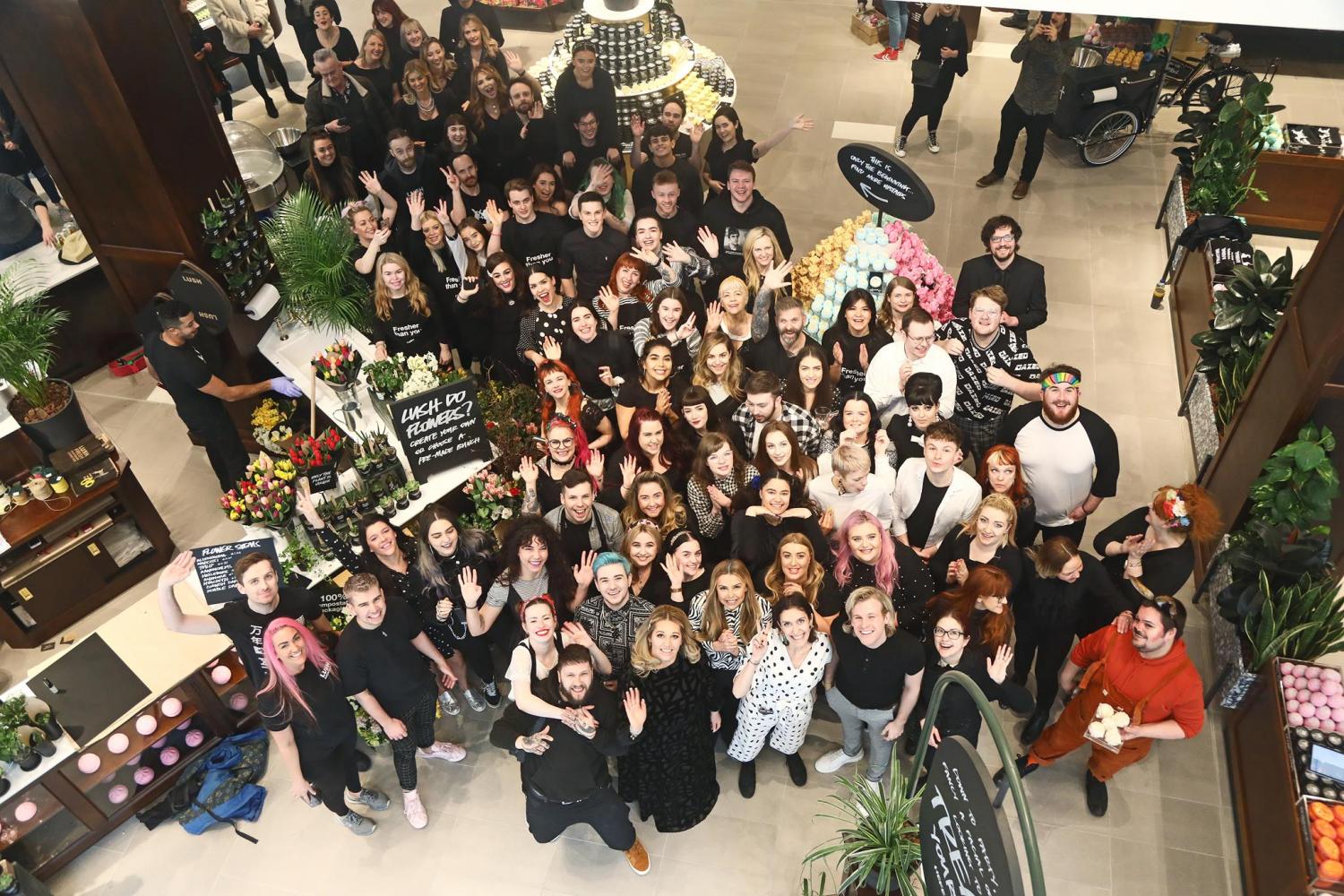
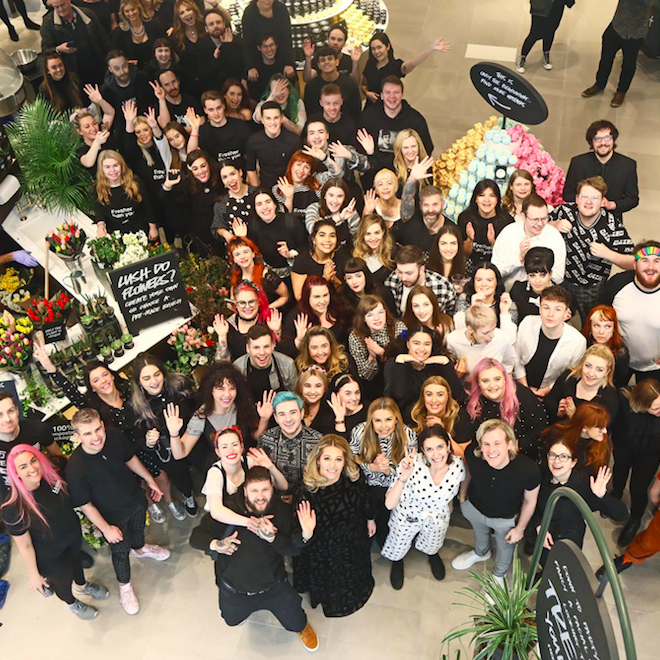
The new wave of employee activism is alerting more executives to the opportunities that can arise when companies collaborate with their workers on issues of public concern. There are also many challenges, but latecomers have the benefit of learning from ethical leaders. One such leader is the United Kingdom-based artisanal soap company Lush.
Ethical campaigning: communicate, collaborate, educate
For Lush, ethical issues are not a sidebar pursuit. The company has built its brand identity around a series of ethical campaigns.
Lush employs an in-house campaign professional, also known as the company’s “in-house activist.” That position is currently held by Carleen Pickard, who brings a career in social and environmental activism to the company.
The position enables Pickard to bring together insights from workers and management. She also ensures that everyone is educated and on board once the campaign has been identified.
That approach involves a significant amount of input from employees, who bring their personal experiences together from hundreds of Lush locations in different countries.
“We routinely pull staff in and ask them what should be the issue to work on,” Pickard explains. “Our leadership likes to say that we should focus on issues that are not talked about in other places and spaces, and are not expected from a soap company.”
Lush also forms alliances with organizations that are active in areas that could lead to a campaign.
As a result, Lush has ventured deep into territory that has little or no direct relationship to its supply chain or its bottom line.
Pickard cites the example of a long-running campaign against the practice of harvesting shark fins. Last February the company campaigned for transgender rights, and in 2017 it campaigned for abolition of the death penalty in the U.S.
The Global Climate Strike difference
Lush’s history of ethical campaigning placed the brand in a strong position to support the Global Climate Strike, a series of street protests and other actions taking place around the world from September 20 to 27.
The company had previously focused on more specific climate issues central to Canada, including the tar sand fields and oil pipeline construction. During those campaigns, Pickard felt like the climate movement was “beating on people’s doors and knocking down walls” to get attention. The feeling of urgency was confined to those actively involved in the movement.
One of the most compelling differences in the Global Climate Strike movement is the mass involvement of students, many in their early to mid-teens.
“What is different this time absolutely is the youth voice coupled with the urgency. We are not just feeling that urgency, we are also hearing it from the other generation,” says Pickard.
Pickard cites one banner in particular at the Global Climate Strike, which read: “You will die of old age. We will die of climate change.”
“That is some of the clearest campaigning I have ever seen,” she says. “It is very inspiring and also very humbling.”
Pickard emphasizes that Lush is not encouraging its workers to “strike” in the conventional sense, as an action against the worker’s own employer.
“We are participating in this all together and we value the power of workers to strike,” she clarifies. “That’s an important part of the conversation, and it provides an opportunity to talk about that power.”
Next steps for ethical campaigns at Lush
Lush foresees political alliances as the next logical step, for ethical campaigning, especially regarding the transition to sustainable energy.
“That question of what we do next — recycling and tote bags are embedded in people’s minds as the thing you do, not just the right thing. At this point we need political action,” Pickard explains.
Lush is not alone in that regard. In the field of gun safety, for example, leading U.S. retailers have adopted new in-store policies for their customers while also allying themselves with grassroots political organizations to lobby for common sense gun regulations at the state and federal level.
As with gun safety in the U.S., Pickard cautions that the road to sustainable energy is a minefield of challenges.
The concept of a “just transition” for energy workers and their communities is especially fraught in countries rich in fossil resources, like Canada.
“We are a country that has an economy based on natural resources. A just transition is an incredibly urgent issue but a particularly difficult one, and it can be a particularly ferocious one,” she explains.
Staking out the high ground
It is practically impossible for most companies to be absolutely perfect in terms of their own energy transition, and that can provide fossil energy advocates with an opening for criticism. Nevertheless, Pickard advises that brands can prevail against their critics by staking out the high ground.
“It’s not about us. At this point it’s about the future generations, and I think people are responding to that,” she says. “Talking about climate is not a progressive or conservative issue. All of our messaging is about the future.”
Employee activism and ethical campaigning
Lush may be unique in its emphasis on ethical campaigning as a brand identity, but some elements of that approach are already at work among other leading companies.
Two examples of that strategy are the anti-poverty projects of the Whole Planet Foundation of Whole Foods, (now owned by Amazon), and Coca-Cola’s water replenishment and conservation initiatives.
Another type of example is illustrated by Accenture, which has adopted a broad collaboration with its employees to support LGBTQ+ rights around the globe.
Many companies are also active in the gender equality movement. The waste hauling company Republic Services is a good example of a company that is aggressively reaching out to recruit women to traditional male-held jobs.
In addition, the Global Climate Strike has inspired participation by thousands of businesses and websites to spread the climate action message to their customers and clients. Meanwhile, employee groups at several leading companies — most notably Amazon — have used the Global Climate Strike to lobby for change by their own employer.
With the rise of both youth and employee activism evident in the Global Climate Strike, it appears that the grassroots have spoken. Businesses that expect to thrive in the coming years would do well to follow the lead of Lush and companies like it, and respond to the concerns of their employees, now and in the future.
Image credit: Lush U.K./Facebook
Monetizing Millennial Consumers, from Sustainable Brands to Sustainable Investing


In what has become a clear trend, millennial consumers are putting their money where their ideals are. They are choosing products and services from brands that reflect their concerns about the environment and social issues. This generation is also providing a bottom line incentive for companies to adopt more sustainable practices, and that could be just the tip of the iceberg in terms of consumer influence. A recent survey of individual investors from Morgan Stanley suggests that there is still ample room for consumers to add the weight of their financial choices to the sustainability movement as well.
Investors are on the alert for sustainable options
The new survey, titled Sustainable Signals, was released on September 12 by the Morgan Stanley Institute for Sustainable Investing.
As the third survey in a series, the new report provides an opportunity to take stock of trends concerning global warming and other environmental issues, especially among younger adults.
The survey finds that “interest and adoption of sustainable investing has grown steadily since 2015,” with 85 percent of individual investors in the U.S. now expressing interest in sustainable investing strategies.
In the group of millennials interest in sustainable investment is even higher, at 95 percent.
Most significant, perhaps, is the increasing proportion of investors who are “very” interested in sustainable investing.
“The trends continue to go up in terms of interest and general knowledge. That’s exciting,” notes Jamie Martin, an Executive Director in Morgan Stanley's Global Sustainable Finance group.
“We are most excited about the interest numbers,” he explains. “The intensity of interest — ‘very interested’ — is up. Our thesis around all of this is that sustainability trends are driving consumer decision making and the brands that consumers are supporting, and that is trickling over into their investment behavior.”
The value of science-based targets
The new survey results demonstrates the ongoing trickle-over effect. As with consumers who select groceries and household goods based on a brand’s reputation for sustainability, investors are becoming more sophisticated, and they are looking for financial products that follow their interests.
Investor sophistication also translates into a greater awareness of goal-setting and evidence-based achievements.
That trend supports the efforts of companies that have signed on to the Science Based Targets (SBTi) initiative. The SBTi program measures and certifies corporate sustainability actions in the context of the goals of the Paris Agreement on climate change.
“Science based targets are one way for investors to understand the impacts,” Martin says. “Some companies are embedding those into their corporate strategies, and those goals will be what they communicate to investors. We think there is enormous value in helping our clients better understand what they own in their portfolios.”
From interest to action
Unfortunately, the survey also reflects the disconnect between consumers having an interest, and those who actually act on that interest.
Although the survey found 85 percent of investors interested in sustainability, it also found that only 52 percent of the general public has undertaken a sustainability investment (for example, investing in funds aimed at specific environmental or social goals). Millennials fared somewhat better, at 67 percent.
That gap may indicate some lingering doubt over the financial advantages of sustainable investing. The survey did find evidence that many investors still perceive a trade-off, with 64 percent responding that “investors must choose between financial gains and sustainability.”
On the bright side, the survey also indicates that investors are primed to increase their activity in the sustainable investment field, with 86 percent of respondents believing that “corporate ESG practices can potentially lead to higher profitability and may be better long-term investments.”
In addition, the survey found that 88 percent “believe that it is possible to balance financial gains with a focus on social and environmental impact.”
“The reality of sustainable investment is they perform quite similarly to traditional investment,” Martin says. “It’s about companies activating their strategies proactively to address issues like climate change, gender diversity, and plastics.”
Aggregating the power of the consumer
Overall, the survey suggests that individual consumers control a large, untapped well of financial resources that could help accelerate the transition to a low carbon economy, in addition to addressing other areas of social concern.
That means stakeholders in the financial services profession have a role to play in shaping and channeling investor choices to achieve maximum impact.
“This idea of individuals voting with their dollars and the choices that they make is powerful,” explains Martin. "It has to be harnessed and aggregated in a way that moves the needle, and companies are positioning themselves to resonate with the next generation.”
Financial stakeholders can only do so much, though. For example, harnessing the sustainable investment power of 401(k) retirement accounts would create a significant impact. However, according to a recent report by CNBC, almost 25 percent of adults in the U.S. have have no retirement savings at all, let alone a 401(k) plan.
There are other financial bottlenecks at work. Especially for millennials and the up-and-coming generation of potential investors, other obligations compete for their paycheck include student loans, along with the high cost of basic expenses like housing, health care and transportation.
Despite these obstacles, Morgan Stanley is among those foreseeing a strong upward trend in sustainable investing.
“These findings reaffirm that sustainable investing has entered the mainstream and is here to stay,” concludes Audrey Choi, the firm’s Chief Sustainability Officer and Chief Marketing Officer of Morgan Stanley. “Increasingly, investors want to know what they own and want those holdings to reflect their values.”
Image credit: Jake Ingle/Unsplash
During Climate Week, U.N. Calls For 'Ambition Loop' Between Companies and Governments


As governments continue to falter on their commitments to the 2015 Paris agreement, the U.N. Intergovernmental Panel on Climate Change (IPCC) predicts warming in excess of 3 degrees Celsius above pre-industrial levels by the end of this century if ambitions do not increase.
IPCC scientists consider 1.5 degrees Celsius of warming to be a significant tipping point, upon which the severity and intensity of storms, droughts, floods, and heat waves will increase around the world. In a 2018 report, the IPCC warned that we're on pace to exceed the 1.5-degree mark in less than 12 years and that warming even half a degree more could substantially worsen climate impacts.
At the Climate Action Summit during the annual U.N. General Assembly in New York this week, Secretary-General António Guterres challenged world leaders to come prepared with long-term net-zero targets and new, more ambitious national climate action plans. “The climate emergency is a race we are losing, but it is a race we can win,” he said in a statement. “This is not a climate talk summit. We have had enough talk. This is not a climate negotiation summit. You don’t negotiate with nature. This is a climate action summit.”
Meanwhile, the rising youth movement led by teenage climate activist Greta Thunberg brought a renewed sense of urgency to the proceedings. In an emotional speech at the Assembly, which quickly went viral on social media, Thunberg put world leaders on notice, saying: "You have stolen my dreams and my childhood with your empty words.”
"We are in the beginning of a mass extinction, and all you can talk about is the money and fairy tales of eternal economic growth," she continued. "For more than 30 years, the science has been crystal clear. How dare you continue to look away and come here saying that you're doing enough, when the politics and solutions needed are still nowhere in sight."
As Guterres implored world leaders to increase their commitments to the Paris agreement, the United Nations Global Compact (UNGC)—which convenes businesses around U.N. goals—is looking to bring the private sector into the fray.
Back in June, the UNGC and U.N. Development Program called on business leaders to set emissions reduction targets that align with the global push to cap temperature rise at 1.5 degrees Celsius. On Sunday, ahead of the U.N. Climate Action Summit, the UNGC announced that 87 companies had signed on to its Business Ambition for 1.5°C campaign.
The latest companies to come on board include American power company NRG Energy, Danish multinational pharmaceutical company Novo Nordisk and natural household products company Seventh Generation, among others. These businesses—representing more than 4.2 million employees and a combined market capitalization of over US$2.3 trillion—committed to setting science-based emissions targets that support a 1.-5-degree trajectory.
Can a public-private "ambition loop" move the needle on climate change?
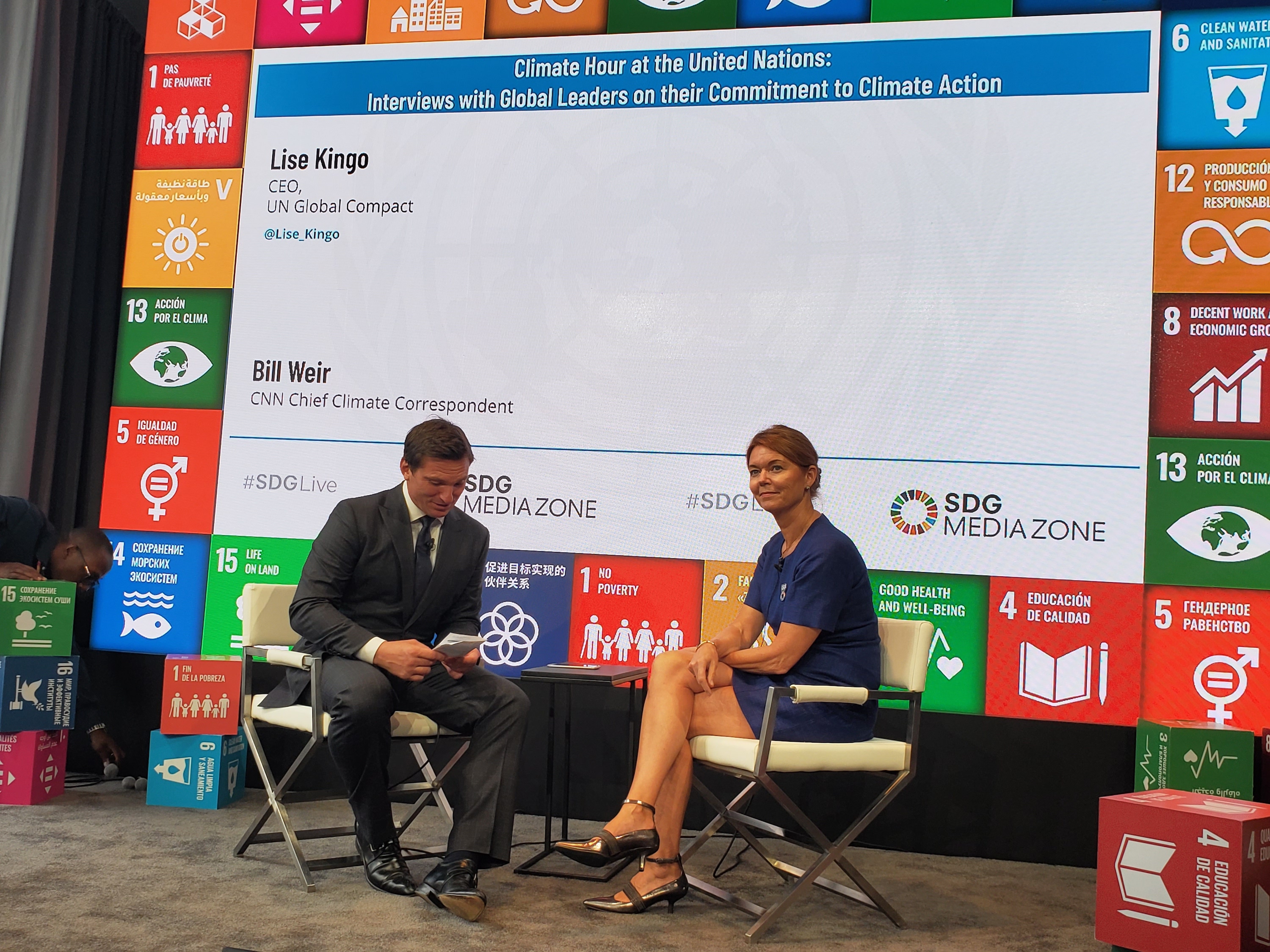
(Image: UNGC CEO Lise Kingo speaks with Bill Weir, CNN's chief climate correspondent, at a side event during the U.N. Climate Action Summit in New York on Monday.)
Importantly, signatories of the Business Ambition for 1.5°C campaign agreed to track—and reduce—greenhouse gas emissions across their entire value chains. On average, value-chain (or Scope 3) GHG emissions are 5.5 times greater than those associated with a company’s operations, according to the UNGC and CDP, yet few companies account for them. To put this in perspective, these companies' annual operational emissions alone are equivalent to the annual emissions of 73 coal-fired power plants. (You do the math.)
Companies including Hewlett Packard Enterprise, SAP, Levi Strauss and Unilever extended their GHG commitments to their entire value chains as part of the new campaign, after previously committing to 1.5-degree-aligned reductions for their operations.
According to the UNGC, this action from the private sector has the potential to create an “ambition loop,” with governments and businesses playing off one another and ultimately driving climate action to the next level.
"We need an ambition loop between the business sector and governments to really push this agenda forward," Lise Kingo, CEO and executive director of the UNGC, said at a side event during the Climate Action Summit on Monday. "The Secretary-General has been very bold and very inspirational, so we want to do everything we can to support him."
More than 10,000 corporate members already file annual reports with the UNGC that track their alignment with U.N. goals around climate change, human rights and fair labor. Signatories to the Business Ambition for 1.5°C campaign must also have their emissions plans approved by the voluntary Science-Based Targets initiative (SBTi) within the next two years and commit to reach net-zero emissions by no later than 2050.
Of course, this is easier said than done. "The commitment is easy to understand, but the road there is very challenging," Jesper Brodin, CEO of Ikea Group, said in New York on Monday. Ikea Group has committed to become climate positive by 2030, meaning the GHG reductions associated with its renewable energy and clean technology investments will exceed its annual value chain emissions. "Then we ask: How is that even possible?" Brodin continued. "It’s part of a systematic equation that begins with science-based targets and with verifying that we are serious about them."
Guterres praised the signatories for their early action but warned that this must be a beginning, not an end, if we hope to avert a 3-degree warming scenario. “It is encouraging to see many first-movers in the private sector align with civil society and ambitious governments by stepping up in support of a [1.5-degree] future,” he said in a statement. “Now we need many more companies to join the movement, sending a clear signal that markets are shifting.”
TriplePundit is covering the U.N. General Assembly and Climate Week NYC through the weekend. You can follow our coverage here.
Image credits: Mary Mazzoni/TriplePundit
Vending Machines That Dispense Books: A Creative Solution to the 'Summer Slide'


(Image: Award-winning children’s author David Ezra Stein hosted a special story time at the Queens Public Library in July to celebrate the launch of Soar with Reading's 2019 season.)
As the school year gets into full swing, students all over the country are excitedly telling their classmates and teachers how they spent their summer vacations. For thousands of kids in New York City, that story now includes plenty of time spent with free books from JetBlue’s Soar with Reading program. This summer, JetBlue placed free book vending machines in areas identified as “book deserts” in every New York City borough including two in Queens.
Launched in 2015, Soar with Reading is an award-winning literacy initiative that tackles the lack of books available in low-income communities. Such communities are often virtually bereft of books for sale, especially age-appropriate children’s books, even in New York where NYU Steinhardt's most recent study found that over 75 percent of students reported they liked to read, a surprising difference compared to a study by the National Literacy Trust that reported only 1 in 4 enjoyed reading.
The repercussions of limited access to the books kids crave are serious for children who are learning to read. Children who are frequently read to by adults intuitively begin to understand how print works, how stories are told and retold, and how print matches to speech sounds in these early language lessons. Even more importantly, books open up the world of information, and begin to orient children toward building knowledge, essential for reading comprehension and school achievement. Studies have shown that owning 25 books or more has a sizable effect on achievement, with each additional increment of books, such as 10 or more, improving achievement.
The lack of access to books is most dire to students’ development over the summer, when kids lose the access to books that school otherwise provides. One recent study showed that 20 percent of kids between the ages of 6 and 17 didn’t read a single book over summer vacation. Those with limited print experiences are likely to start school behind and stay behind, as children who aren’t strong readers are frequently assigned simplified text with easy vocabulary words while their more proficient peers are grappling with complex text and content.
To improve book access for children in need, the private and public sectors can achieve the most success when they work together. JetBlue is one company that has stepped in to fill the void of accessible books for children over those critical summer months. Soar with Reading has located its innovative book vending machines in book deserts in five cities in as many years and has made an impact on the markets it serves by ingraining itself in the very heart of in-need communities. Before entering a new market, the Soar with Reading team spends extensive time identifying and exploring neighborhoods that qualify as book deserts before deciding where to place machines to have the greatest impact.
Getting to know the community is essential for the machines to wind up in the highest foot-trafficked locations by populations of need such as community centers, grocery stores, rec centers and state parks. It is through the networks already created by these community organizations that corporations seeking to make a measurable impact have the greatest chance of creating real change. Through this kind of partnership, both sides create greater value for the community than they could achieve on their own. The corporate partner is able to provide targeted resources to those who need them most, and the nonprofit partner benefits from the resources that often come along with a corporate responsibility partnership.
It is partly due to this kind of partnership that JetBlue was able to distribute 66,000 books in low-income New York communities this summer through its free book vending machines and will provide 34,000 books to its nonprofit partners for programming throughout the school year. Some who hear about the dearth of books in communities might argue that it’s simply a matter of supply and demand: Low-income people are less likely to value or buy books, and therefore, proprietors are less likely to stock them. JetBlue’s continued success with Soar with Reading dispels this notion: The program has donated more than $3.75 million since its inception.
Another important factor behind Soar with Reading’s continued success is modeling. It is imperative that children see the adults around them reading and that they see themselves represented in the books they read. According to Scholastic, about 6 in 10 parents (58 percent) report diversity is extremely or very important in the books their child reads, and nearly 4 in 10 kids ages 9 to 17 (38 percent) agree. JetBlue understands this need and stocks its vending machines each year with titles that feature diverse characters and language options that reflect the makeup of each community.
Next summer the Soar with Reading program will land in Boston, and JetBlue is already working to understand how to best reach students and parents alike. By meeting families in the spaces they already frequent—and offering accessible and relatable solutions—JetBlue expects to give away more than $4 million worth of books by the time next year’s program ends. Book deserts are a solvable problem, and companies can best be part of the solution by taking steps to get stories in children’s hands that they remember for many summers to come.
This article series is sponsored by JetBlue and produced by the TriplePundit editorial team.
Image courtesy of JetBlue via the 3BL Media Newsroom
Workplace Giving Rises with Employees’ Expectations


Employee donations, a vital income stream for non-profits addressing many societal issues at the grass-roots level, are on the rise and agencies like America's Charities are simplifying workplace giving.
“It’s clear that employees of all kinds expect to be able to give at work, they want to be in the driver’s seat of their individual giving and they want technology to make it easy,” said Jim Starr, president and CEO America’s Charities, which establishes and manages workplace donation programs in partnership with not-for-profit agencies. “Those expectations are only going to get more widespread, and more resilient, as the next generation joins the workforce.”
Since its founding nearly 40 years ago, America’s Charities has raised more than $700 million for more than 20,000 nonprofits involved with needs such as education, human rights, hunger, poverty, research, animal welfare, veteran assistance, disaster relief and health services, according to the agency. “America’s Charities works at the intersection of uniting the desire of employers and their employees wanting to do good, with the charitable organizations that are delivering good,” Starr said.
Despite economic ups and downs, job security fears and increasing demands on the average paycheck, workplace giving is growing at a rapid pace--employee engagement programs make up more than $4 billion annually in contributions to charitable organizations. “In some ways, workplace giving is the unsung hero of individual giving,” according to Starr.” It’s easy, safe, convenient, and it provides nonprofits with sustainable support. Businesses recognize the value it brings.”
America’s Charities’ employee donor research showed that 86 percent of employers understand that their employees expect them to provide opportunities to engage in the community, and 87 percent believe their employees expect them to support causes and issues that matter to those employees.
While millennials often have been cited as lobbying for more socially conscious giving, America’s Charities’ research showed the trend spans generations. When it surveyed employee donors, it asked them questions about why and how they give at work. “Nearly 6 in 10 employees told us it was imperative, or very important, to work where culture is supportive of giving and volunteering,” noted Starr. “When we looked at the survey results, we found something surprising. After scrutinizing the data, we found millennials weren’t the only group that wanted this experience. Baby Boomers, too, and every generation otherwise – Gen X, Gen Z – want to give at work as a means of giving back, connecting with their colleagues, and better understanding the impact of their giving.”
For about 20 years, America’s Charities has conducted research regarding trends in workplace donations. In 2013, it began its Snapshot series, surveys of specific segments of the stakeholder of social change, such as employers, employee donors and nonprofits. Starr said the series helps provide insight into what employees view as important for workplace donation programs and how that matches up with employers’ perceptions and ideas. “We know from our employee donor research that 71 percent of employees believe it's imperative or very important to work where the culture is supportive of giving and volunteering,” according to Starr.
Crucial to employee participation is being able to choose who receives their donations, research shows; not having a choice stops 30 percent of employees from donating through the workplace, Starr said. “The ability to donate how and when an employee wants is among the top five critical factors in making a positive giving experience.”
The bottom-line: employees—no matter their age, rank, or experience—want to work for a company where charitable giving and volunteering is supported, Starr added. “They want to improve the world around them, and now more than ever, they expect their employers to offer opportunities to support the community via time, money and skills.”
Don’t forget: Next month, we're hosting 3BL Forum: Brands Taking Stands – What's Next, October 29-30, at MGM National Harbor, just outside Washington, D.C. Together, our 90-plus speakers promise to make this two-day event one that is fast-paced, high-octane and invaluable with their perspectives on the latest in the environmental, social and governance (ESG) community.
We're proud to have America's Charities as an important sponsor for this event.
We're pleased to offer 3p readers a 25 percent discount on attending the Forum. Please register by going to the 3BL Forum website and use this discount code when prompted: NEWS2019BRANDS.
Image credit: Pexels
Starbucks and Mental Health: Reaching and Retaining Talent in a Meaningful Way


In today’s competitive labor market, companies that lead with innovation, transparency and commitment have a better chance of onboarding and retaining talented employees. But among many challenges employees face, benefits designed to take on mental illness are either lacking, or are not accessed as often as they should be. As Starbucks moves forward with a novel mental health initiative to support all U.S. and Canada employees, the company may be leading the way to “break the stigma.”
That’s according to John Kelly, Starbucks senior vice president of global public affairs and social impact who also recently told CNN that the company’s initiative has the goal to “really normalize that your mental health is just as important as your physical health.”
Mental health has a huge impact on companies' performance
The CDC references that one in five Americans will experience a mental illness in a given year. The impact can be devastating, as struggles with our mental health can affect our ability to relate to others, handle stress and perform daily functions.
Starbucks innovative approach could spark a wider trend for other companies, large and small, to beef up mental health benefits. Not only is the company’s new plan gaining favorable attention, it is also working to support a healthy bottom line.
Mental health issues account for 30 percent of all disability costs. Studies show that taking effective steps toward managing mental health can produce a 15 to 33 percent reduction in health care costs.
How Starbucks’ mental health benefits go beyond what’s required
In the U.S., the Mental Health Parity and Addiction Equity Act (MHPAEA) requires that group health plans and health insurance issuers to ensure that financial requirements (such as co-pays, deductibles) and treatment limitations (such as caps on total allowed visits) applicable to mental health or substance use disorder benefits are no more restrictive than the requirements or limitations applied to most other medical benefits.
While the MHPAEA law supports inclusion of mental health benefits, the law is the baseline. In North America, many mental health benefits go unused because of stigma or because mental health benefits only kick in after the overall health plan deductible has been met. This can equate to paying between $60 to $120 out-of-pocket for the average 45 to 60-minute session. If you have higher-quality coverage, costs average between $20 to $50 per session, or of that equal to a typical health plan’s copay.
Starbucks’ new initiative is different in that it also includes an enhanced employee assistance program (EAP) and mental health training for store managers. Starbucks is training managers to respond to signs of mental illness and substance abuse on the frontline by partnering with Mental Health First Aid, a national program that gives people the skills to help someone experiencing an issue with mental health. Managers can act as on-site emotional support for their teams and encourage team members to access available benefits and resources.
By January, the company will also provide U.S. and Canada employees access to subscriptions for the app Headspace, which offers hundreds of guided meditations for a broad range of issues relating to stress, sleep and more.
Moreover, this isn’t the first instance the company has taken steps toward improving mental health benefits. In 2016, Starbucks Canada increased the amount employees can use annually to cover the cost of therapy from $400 to $5,000.
Going beyond more generous employee benefits
Last year, subsequent to the federal tax overhaul, the company pledged to spend $250 million on new employee benefits, including an increase in pay for U.S. employees. Another added benefit included the addition of six weeks of paid parental leave for hourly employees who become new dads. This benefit previously had been only offered to new mothers and adoptive or foster parents. The company also added subsidized childcare for all U.S. employees.
This time around, in addition to the EAP, Starbucks will partner with organizations that support ending the stigma around mental health. Born This Way Foundation, a mental wellness nonprofit founded by singer Lady Gaga, and Team Red White & Blue, a nonprofit that supports veterans’ well-being, will have reciprocal relationships with Starbucks and its employees.
“If we take a positive step forward, you know, sometimes that can be a catalyst for others to take a positive step forward and create a movement,” Kevin Johnson, Starbucks CEO, said in a recent interview.
As comprehensive, inclusive benefits become stronger motivators for workers to stay loyal to companies, employers like Starbucks that take steps to support a healthier workforce can gain the edge needed to succeed.
Image credit: Nik Shuliahin/Unsplash
Bloomberg Supports UN Call to End Coal by 2020, But Much Work Lies Ahead
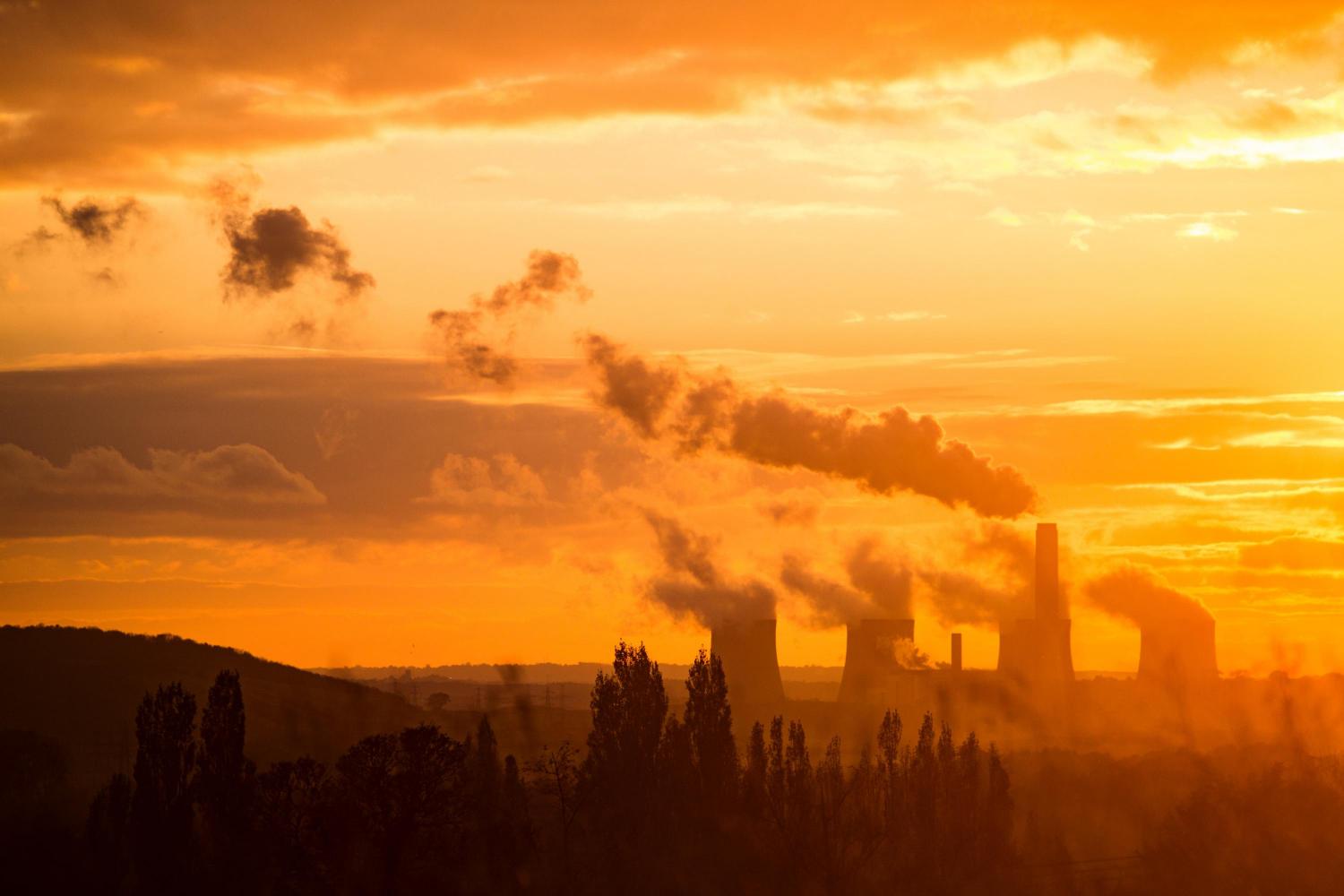
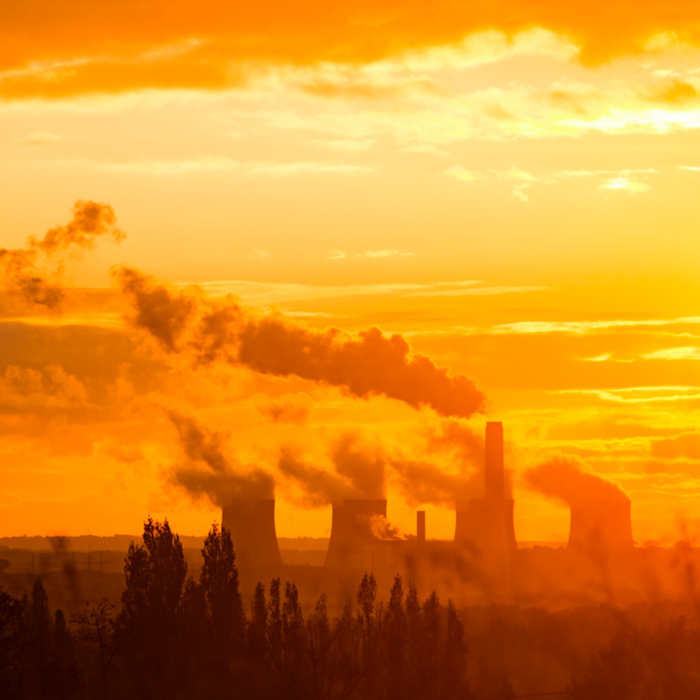
Part of our special coverage of Climate Week NYC 2019.
Today, United Nations Special Envoy for Climate Action and former New York City Mayor Michael R. Bloomberg announced his support for the U.N. Secretary General António Guterres’ initiative to stop the development of new coal-fired power plants after 2020. Earlier this year, Bloomberg also announced his intention to invest $500 billion to shut down remaining coal plants in the U.S. by 2030.
These initiatives and investments mark the latest efforts to hasten the demise of already-weakened coal-fired power in the world’s energy portfolio. Coal as an energy source has already been on the decline for several years. It no longer makes economic—or environmental—sense to invest in what is essentially a 1970s energy strategy.
The case for moving on from coal
Coal is the fuel of the past. The rise of cheap natural gas accelerated the cost-ineffectiveness of coal and significant decreases in the cost of solar and wind have led to predictions of bettering global grid parity with fossil fuels by next year. Combine that with increased energy efficiency across all sectors (residential, commercial, and industrial) and you are left with a poor economic outlook for coal.
Other factors are also important to consider. In a changing climate, with water stress and scarcity increasingly a concern, thermoelectric power is responsible for about 40 percent of all U.S. freshwater withdrawals. That number has decreased in recent years as the oldest coal plants are taken offline and energy efficiency, solar PV, and wind deployment have increased, which all use little to no water. Coal makes up about 27 percent of the U.S. electric generation (considerably less than just ten years ago) and is one of the thirstiest fuel sources. Technology aimed at making coal less dirty, such as carbon capture and storage (CCS), has turned out to be much more expensive than going with a cheaper electricity source (and CCS also places additional stress on already-stressed water supplies).
Transitioning from coal won't be easy
Despite all this, shutting down old coal plants and preventing new coal plants from being built is complicated beyond just the basic economics of coal itself. Transitioning utilities to more renewable energy, in particular incorporating distributed energy resources into its business model, will require some out-of-the-box thinking by the utilities themselves. The traditional business model relies on selling kilowatt-hours of electricity, so restructuring the business model to sell a service (distributed generation, demand response programs, and so on) rather than a commodity will be key. Some utilities have thus far resisted this change, even in the face of cities and states adopting clean energy goals.
Further, transmission and distribution systems will need investment to enable them to better dispatch demand, improve grid operations, and better integrate renewable energy and storage. Finally, while regions with heavy coal production have already faced significant stress related to job loss, there is a huge opportunity to retrain workers, but it will require significant investment in money and other resources, not just sound bites on campaign trails.
Bloomberg’s announcement also calls on the private sector, and utilities in particular, to undertake some of these transformative actions and notes that his foundation and philanthropies are working with developing countries to help them leapfrog into the clean energy economy. In order to see this goal through in the U.S., sustained interest and investment from the private sector—utilities, not least among them—and the public sector—climate change policies and workforce development—are essential.
Image credit: Diana Parkhouse/Unsplash